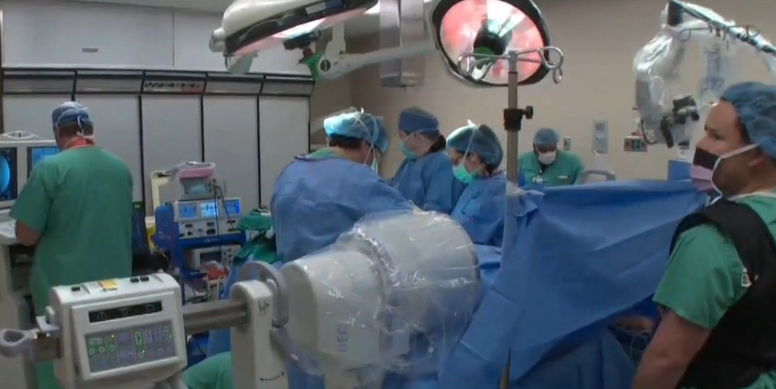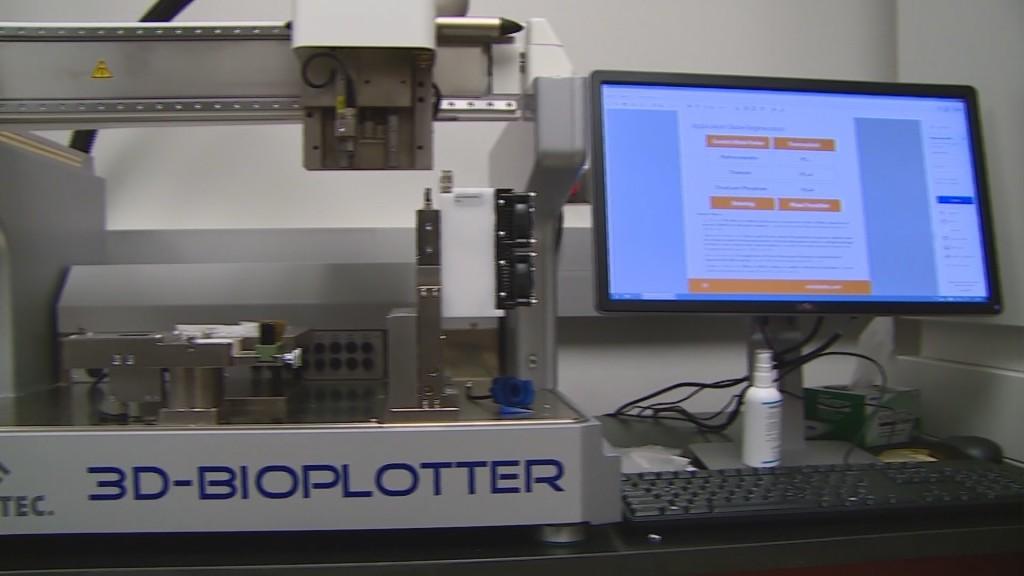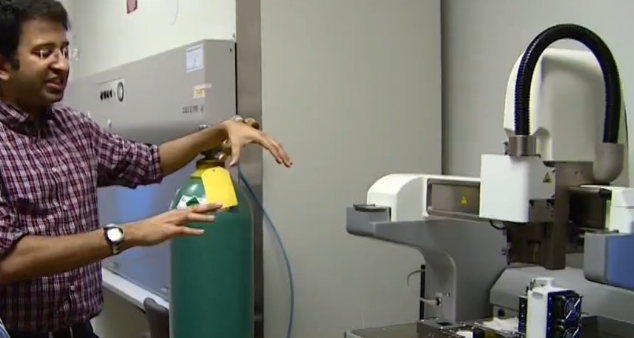 The race is on! And why a sense of urgency? To save human lives—and prevent as much suffering as possible. One would say that’s probably a fairly good motivator if you have the knowledge and the tools to do so.
The race is on! And why a sense of urgency? To save human lives—and prevent as much suffering as possible. One would say that’s probably a fairly good motivator if you have the knowledge and the tools to do so.
While not too long ago at all the thought of actually making organs wasn’t even a thing, with the advent of 3D printing and bioprinting, that quickly moved from concept to eventual reality, with the only question now being who will sweep across the finish line first with a 3D printed kidney or liver ready to be transplanted into a human.
 What motivates the researchers who are so dedicated to this work? Aside from the excitement of making an incredible scientific breakthrough, bioprinting of organs has enormous implications as many lives will be saved when patients don’t have to wait for organs and can also be relieved of terrible daily suffering, receiving an organ created just for them—and with little chance of rejection.
What motivates the researchers who are so dedicated to this work? Aside from the excitement of making an incredible scientific breakthrough, bioprinting of organs has enormous implications as many lives will be saved when patients don’t have to wait for organs and can also be relieved of terrible daily suffering, receiving an organ created just for them—and with little chance of rejection.
Currently researchers at the University of Texas San Antonio (UTSA) think they may be the ones who are indeed close to that finish line, with the reward being that they will change and save lives and perhaps be the catalyst for eliminating the idea of transplant waiting lists altogether one day.
Many doctors and surgeons are well aware of the daily pain that many of their patients, like Melissa Ann Padilla of San Antonio are in, and they—along with the patients and their loved ones—look forward to the day when this can be prevented and eliminated. Patients like Padilla have basically suffered since birth, and although Padilla has been lucky in finding a match for a kidney thanks to a family member, many are not so lucky. And those consequences can, sadly, be fatal.
Born at a weight of only 2 lbs, 2 oz, Padilla has known nothing but kidney issues her whole life, and they escalated with age.
“People wait forever, people die on that list and that wasn’t an option for me, because I have two kids and a family,” Padilla said.
 While she has been lucky, we know that many are not. And that does create a sense of urgency for researchers and doctors. Dr. Teja Guda hopes that with the help of a recently purchased EnvisionTec 3D printer, a 3D-Bioplotter, at the UTSA biomedical engineering department, they might be able to make a change sooner rather than later. Regarding the technology, Guda says that he believes there may only be a handful of other bioprinters in the world similar to the one they have—maybe ten total, across the globe. These particular printers cost around $200,000 and are able to fabricate cells and tissue using bio-ink, with the ultimate task being in keeping them alive once they are printed.
While she has been lucky, we know that many are not. And that does create a sense of urgency for researchers and doctors. Dr. Teja Guda hopes that with the help of a recently purchased EnvisionTec 3D printer, a 3D-Bioplotter, at the UTSA biomedical engineering department, they might be able to make a change sooner rather than later. Regarding the technology, Guda says that he believes there may only be a handful of other bioprinters in the world similar to the one they have—maybe ten total, across the globe. These particular printers cost around $200,000 and are able to fabricate cells and tissue using bio-ink, with the ultimate task being in keeping them alive once they are printed.
“Most 3D printers use one of two things to print materials: They either use really high pressures or high temperatures,” Dr. Guda said. “Now, if you had living cells going through some of those conditions, they would die by the time I printed them.”
Dr. Guda does indeed have very exciting news, however, in that he sees regeneration of both bone and muscle tissue becoming a reality in the next year. As we’ve seen, this technology is expanding in building blocks, beginning with the ability to make cells, then blood vessels to feed them, and from there Dr. Guda sees the next steps being the actual growth of organs. And while that is obviously huge progress, Dr, Guda expects being able to use 3D printed organs for actual transplant in humans to be as far away as another decade.
“You hear of these people all the time who are on donor lists and there’s all sorts of criteria and you have to be a perfect match, but the technology we’re talking about, if I’m just printing a material that everybody would accept normally and it’s your own cells going into it, there’s no scope of rejection and it’s a game changer in that sense more than anything,” Dr. Guda said.
Being able to use cells directly from a patient is a perfect example of the one of the prime benefits of 3D printing, as it offers such opportunity for customization which in many other cases can be already provided quickly and more affordably. In terms of being able to one day create 3D printed organs, we are looking toward what will be the highest form of patient-specific care.
“I think it’s amazing and I would be pretty happy if more people could get what they needed to continue their lives, especially a healthy life and not having to worry about dialysis every day,” Dr. Guda said.
This is a subject we cover often, regarding bioprinting, whether it is that of making capillaries or jaw and gum cells or embryonic stem cells, but it’s certainly made much more interesting when we hear of a timeline from a medical professional engaged in the practice of working toward something like 3D printing organs—which will indeed offer a major, positive step for all of humankind when it happens and is able to benefit those waiting for transplants. Discuss in the 3D Printing Organs Soon forum over at 3DPB.com.
[Source/Images: WFAA8]Subscribe to Our Email Newsletter
Stay up-to-date on all the latest news from the 3D printing industry and receive information and offers from third party vendors.
You May Also Like
Further Understanding of 3D Printing Design at ADDITIV Design World
ADDITIV is back once again! This time, the virtual platform for additive manufacturing will be holding the first-ever edition of ADDITIV Design World on May 23rd from 9:00 AM –...
3D Printer Maker EVO-tech Reborn as NEVO3D — Once More With Feeling
EVO-tech was a 3D printing service and original equipment manufacturer established in 2013 and based in Schörfling am Attersee, Austria. The company produced high-quality material extrusion systems featuring linear bearings,...
3D Systems Brings 3D Printed PEEK Cranial Implant to the U.S. with FDA Clearance
For more than 10 years, 3D Systems (NYSE:DDD) has worked hand-in-hand with surgeons to plan over 150,000 patient-specific cases, and develop more than two million instruments and implants from its...
CDFAM Returns to Berlin for Second Annual Symposium
The second CDFAM Computational Design Symposium is scheduled for May 7-8, 2024, in Berlin, and will convene leading experts in computational design across all scales. Building upon the first event...
































